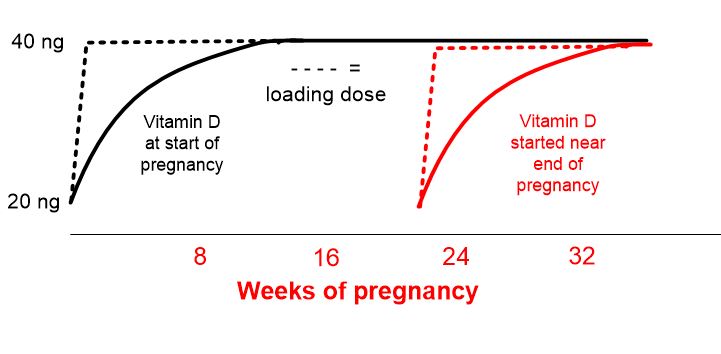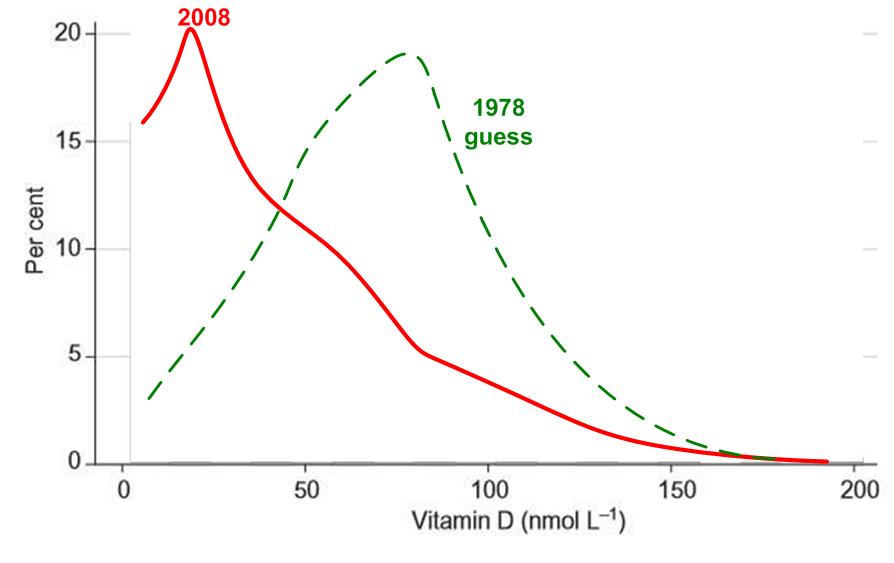First trimester Vitamin D deficiency in associated with placental inflammation, etc.
Severe vitamin D deficiency in the first trimester is associated with placental inflammation in high-risk singleton pregnancy.
Clin Nutr. 2018 Jul 9. pii: S0261-5614(18)31197-X. doi: 10.1016/j.clnu.2018.06.978. [Epub ahead of print]
Zhang Q1, Chen H2, Wang Y1, Zhang C1, Tang Z1, Li H1, Huang X1, Ouyang F3, Huang H4, Liu Z5.
 --- 1. See also Vitamin D Life* Overview Pregnancy and vitamin D has the following charts*
--- 1. See also Vitamin D Life* Overview Pregnancy and vitamin D has the following charts* 
 * Vitamin D needed by pregnant women and neonates (in developing countries now too - 2 tables) – May 2018* Many groups of pregnant women are at high risk of being vitamin D deficient – Jan 2013 has the following chart*
* Vitamin D needed by pregnant women and neonates (in developing countries now too - 2 tables) – May 2018* Many groups of pregnant women are at high risk of being vitamin D deficient – Jan 2013 has the following chart*  * Pregnancy needs at least 40 ng of vitamin D, achieved by at least 4,000 IU – Hollis Aug 2017* 10,000 IU of vitamin D during pregnancy resulted in spectacular infant development – Coimbra April 2018* Congenital Heart Disease is associated with gestational diabetes in first trimester (need Vitamin D and Omega-3 early) Dec 2017Healthy pregnancies need lots of vitamin D has the following summary{include}* Sepsis is both prevented and treated by Vitamin D - many studieshas the following sections* Infants with sepsis have very low Vitamin D levels – Aug 2014* Neonatal Sepsis 4.8 X more likely if poor Vitamin D receptor – June 2018* Neonates 1.7 X more likely to get Sepsis if low vitamin D, mothers had low levels as well - July 2018
* Pregnancy needs at least 40 ng of vitamin D, achieved by at least 4,000 IU – Hollis Aug 2017* 10,000 IU of vitamin D during pregnancy resulted in spectacular infant development – Coimbra April 2018* Congenital Heart Disease is associated with gestational diabetes in first trimester (need Vitamin D and Omega-3 early) Dec 2017Healthy pregnancies need lots of vitamin D has the following summary{include}* Sepsis is both prevented and treated by Vitamin D - many studieshas the following sections* Infants with sepsis have very low Vitamin D levels – Aug 2014* Neonatal Sepsis 4.8 X more likely if poor Vitamin D receptor – June 2018* Neonates 1.7 X more likely to get Sepsis if low vitamin D, mothers had low levels as well - July 2018
📝 Download the PDF from Vitamin D Life
BACKGROUND & AIMS:
Vitamin D deficiency during pregnancy is a worldwide epidemic. This study aimed to identify whether vitamin D deficiency in early pregnancy is associated with placental inflammation in high-risk pregnancy.
METHODS:
This study comprised 23,396 women who provided serum samples in the first trimester for vitamin D analysis from January 2015 to December 2016. Among them, 2648 women with high-risk pregnancy underwent placental pathologic examination. Women were divided into placental inflammation positive (PIP) and placental inflammation negative (PIN) groups based on placental pathology. Multivariate logistic regression was used to evaluate the relationship between vitamin D levels and placental inflammation.
RESULTS:
We found that severe vitamin D deficiency in early pregnancy was associated with placental inflammation. Maternal vitamin D levels were significantly lower in the PIP group than those in the PIN group (P = 0.025). Compared with the highest quartile of vitamin D levels, risk for placental inflammation was significantly higher in women with extremely low vitamin D levels (<5th percentile; P = 0.012). The effect estimate was slightly decreased but still significant (P = 0.027) after adjusting for maternal age, gestational age at birth, birth weight, infant sex, and sample collection season. In addition, compared with the PIN group, the incidences of adverse neonatal outcomes, including sepsis (0.5% vs 2.4%) and fetal intrauterine infection (5.7% vs 15.6%), were significantly higher in the PIP group than that in the PIN group (P < 0.001).
CONCLUSIONS: Severe vitamin D deficiency in the first trimester is a risk factor for placental inflammation in high-risk pregnancy.
